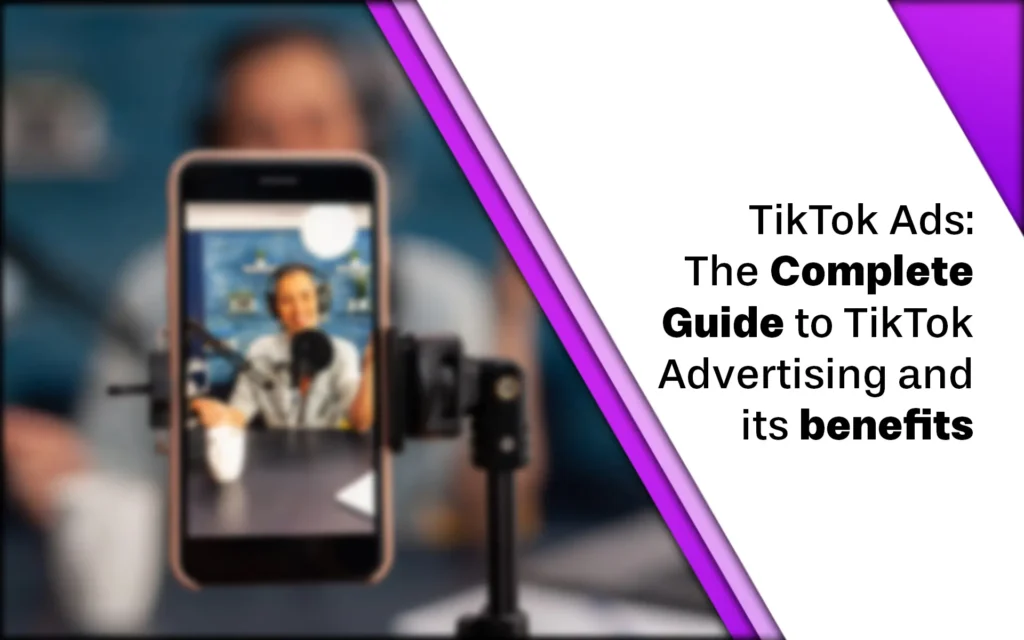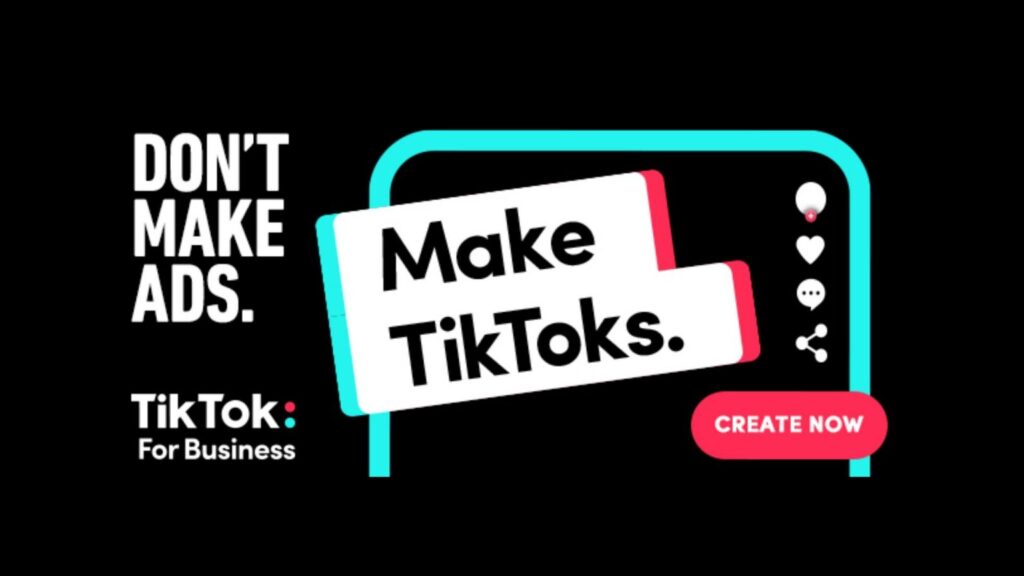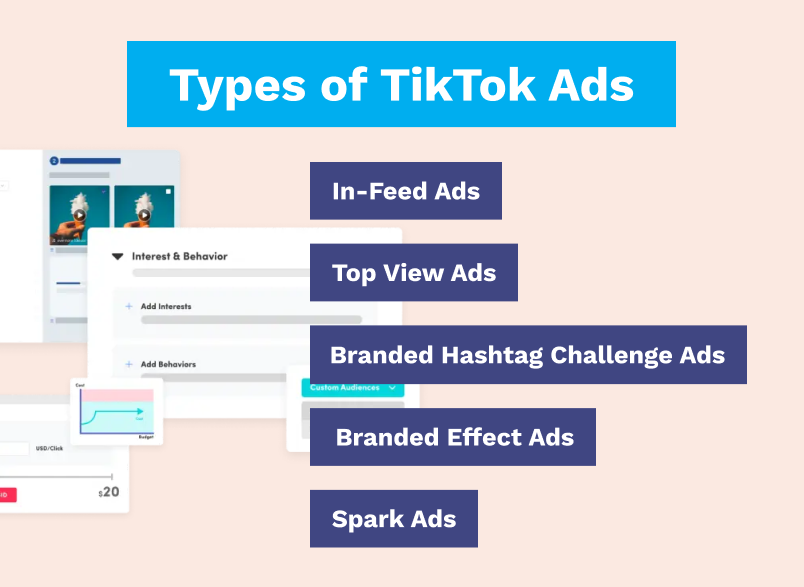
Introduction: TikTok as a Marketing Platform
TikTok has emerged as one of the most influential social media platforms in recent years, offering marketers an unprecedented opportunity to engage with millions of users worldwide. Since its launch in 2016, TikTok has revolutionized the way content is consumed and created, particularly through short-form video content. With over 1.5 billion downloads and a global user base spanning various age groups, TikTok presents a powerful advertising platform for businesses looking to reach younger, trend-driven consumers.
TikTok Ads, part of TikTok For Business, have evolved to become an essential part of many companies’ marketing strategies. This advertising suite enables businesses to tap into the app’s viral potential and creative environment to engage users. Through various ad formats like In-Feed ads, TopView ads, and Branded Hashtags, TikTok offers brands unique ways to present their products or services. In this article, we will explore how TikTok ads work, the types of ads available, their benefits, potential challenges, and how to create a successful TikTok advertising campaign.
What is TikTok For Business?
TikTok For Business is a dedicated platform designed to help brands advertise effectively on TikTok. It serves as a comprehensive toolset that enables businesses to create ads, set budgets, target the right audiences, and track performance. The platform includes an Ads Manager, a self-serve platform that allows marketers to create and manage campaigns.
TikTok For Business not only provides access to the ad creation tools but also offers an array of educational resources to help businesses develop their advertising strategies. The platform guides marketers through the process of understanding TikTok’s unique ad formats, targeting options, and performance metrics.
TikTok For Business makes it easier for brands to:
- Create and launch ads: Marketers can design video ads with ease, taking advantage of TikTok’s built-in tools and templates.
- Track and optimize campaigns: TikTok’s Ads Manager allows brands to monitor key metrics like impressions, engagement, and conversion rates.
- Reach a diverse and global audience: With users in over 155 countries, TikTok provides access to a vast and varied demographic.

Types of TikTok Ads
TikTok ads come in several formats, each offering a different way to engage users. These ad types are designed to blend seamlessly into the TikTok user experience, allowing businesses to capture attention without disrupting the flow of content. The five main types of TikTok ads include:
1. TopView Ads
TopView ads are designed to make a massive impact by appearing right when users open the app. These ads are displayed as the first thing a user sees, giving them maximum visibility. TopView ads can be up to 60 seconds long, making them perfect for brands that require a longer time to convey their message.
Use Case: Brands launching new products or services can use TopView ads to create a strong first impression. For example, a major candy brand like M&M could promote a holiday-themed experience through a TopView ad, creating excitement and driving user participation.
Key Features:
- Maximum visibility as the first ad users see
- Can run for up to 60 seconds
- Great for storytelling or brand awareness
2. In-Feed Ads
In-Feed ads are native video ads that appear in users’ feeds, particularly on the “For You” page, which is the first screen users encounter when they open the app. These ads are designed to mimic the organic content that users typically interact with, which makes them less intrusive and more engaging.
Use Case: If a food delivery service like GrubHub wants to promote a limited-time offer, it can use In-Feed ads to appear in the feeds of relevant users. In-Feed ads can include a call-to-action (CTA), which is particularly useful for driving immediate conversions, such as app downloads or purchases.
Key Features:
- Appears in the “For You” feed
- Can be up to 60 seconds long
- Effective for conversions, particularly with a CTA
3. Branded Hashtags
Branded Hashtag Challenges allow businesses to create and promote custom hashtags, encouraging users to participate in a trend or challenge related to their brand. These campaigns are a great way to increase user-generated content (UGC) and create viral moments. The challenge can involve users performing a specific action, like dancing to a song or showcasing a product.
Use Case: A sportswear brand could create a challenge asking users to show off their athletic skills while wearing a specific product, driving both engagement and product awareness. Celebrities and influencers often play a key role in these challenges, helping boost participation.
Key Features:
- Encourages user participation through challenges
- High potential for virality and user-generated content
- Exclusively available to the brand for the duration of the campaign
4. Brand Takeovers
Brand Takeover ads offer a premium ad format where businesses take over the entire app screen for a brief period. These ads are typically videos, images, or gifs and are displayed when users first open the app. Brand Takeovers can include a mix of In-Feed ads, TopView ads, and Branded Hashtags, giving businesses the flexibility to create a cohesive and attention-grabbing experience.
Use Case: Fashion brands can use Brand Takeovers to create a huge buzz around a new collection. For example, a fashion company might take over the app to showcase their latest line, encouraging users to click through to their website.
Key Features:
- Full-screen takeover of the app
- Combines video, image, and GIF formats
- Can run only one brand per day for exclusivity
5. Branded Effects
Branded Effects are interactive elements that can be inserted into TikTok videos. These effects come in the form of stickers, 3D objects, and augmented reality (AR) filters, allowing users to incorporate brand assets into their videos. This format is particularly effective for brands that want to engage users creatively and boost brand awareness.
Use Case: A cosmetics brand could create a branded filter that allows users to try out different makeup looks virtually. By incorporating a branded effect into a Hashtag Challenge, the brand can increase user interaction and create memorable experiences.
Key Features:
- Includes AR filters, stickers, and 3D objects
- Users can interact with branded elements in their videos
- Great for increasing engagement and creating immersive experiences

How Do TikTok Ads Work?
Creating a TikTok ad is relatively straightforward. To get started, businesses need to set up a TikTok For Business account, which includes defining their business details, setting up a payment method, and configuring ad preferences.
TikTok Ads Manager provides two primary modes for ad creation:
- Simplified Mode: This option is designed for businesses that want an easy, automated process. The algorithm helps create ads based on business goals, making it ideal for brands with limited experience or time to invest in custom ad creation.
- Custom Mode: In this mode, advertisers have complete control over their campaigns. They can perform advanced targeting, conduct A/B testing, and optimize ads for better performance.
Once an ad is created, it undergoes a review process to ensure it adheres to TikTok’s policies. The review typically takes about 24 hours. If the ad is approved, it goes live, and advertisers can begin tracking performance.
Setting Up Your TikTok Ad Account
Here’s a step-by-step guide to creating your TikTok Ad Account:
- Create a Business Account: First, sign up for a TikTok For Business account.
- Describe Your Business: Provide relevant information about your company, including your industry and goals.
- Enter Billing Information: Set up your payment methods, such as credit cards or other online payment options.
- Select Your Ad Manager Mode: Choose between simplified or custom ad creation based on your needs.
- Build Your Ad: Use TikTok’s creative tools and templates to design your ad.
- Review and Submit: Ensure your ad meets TikTok’s guidelines before submitting it for review.
TikTok Ads Review Process
Before your ad goes live, TikTok conducts a review to ensure compliance with their standards. The review process typically takes 24 hours, but marketers can avoid delays by ensuring their ads follow the platform’s requirements. These include:
- A functional and mobile-friendly landing page
- Ads free from spelling or grammatical errors
- Videos that adhere to standard formats (9:16, 1:1, or 16:9)
- Clear and concise CTAs
- No prohibited products or services
TikTok Advertising Costs
TikTok ads are not cheap, particularly when compared to other social media platforms like Facebook and Instagram. Here’s a breakdown of the cost of different ad formats:
- TopView Ads: $50,000+ per day
- Brand Takeovers: $50,000+ per day
- In-Feed Ads: $6,000+ per campaign (with a $20+ daily budget)
- Hashtag Challenges: $150,000+ per week
While TikTok ads can be expensive, the platform offers great value for businesses aiming to target younger audiences who are highly engaged and likely to share branded content.
The Pros and Cons of TikTok Advertising
Pros:
- Massive Exposure: With over 1.5 billion downloads, TikTok has a huge, global audience, offering brands significant exposure.
- Creative Freedom: TikTok’s format encourages creativity, allowing brands to connect with users in a fun and authentic way.
- Highly Engaged Audience: TikTok users spend, on average, 52 minutes per day on the app, which means ads have a high chance of being seen.
- Diverse Audience: TikTok’s user base spans over 155 countries and supports 75 languages, making it ideal for businesses looking to expand globally.
Cons:
- High Costs: The cost of running ads on TikTok can be prohibitive, especially for smaller businesses.
- Younger Demographic: TikTok is primarily popular with users under 30, so businesses targeting older demographics may not find TikTok ads as effective.
- Censorship Issues: TikTok has been criticized for its censorship practices, which could affect the effectiveness of your campaign if your content is flagged.
Conclusion
TikTok ads offer a dynamic and powerful platform for brands looking to reach a young, engaged audience. By leveraging the various ad formats—Top View, In-Feed, Branded Hashtags, Brand Takeovers, and Branded Effects—businesses can create compelling, creative campaigns that resonate with users. However, it’s essential to consider the costs involved and whether the platform aligns with your target audience. With the right strategy, TikTok can be a game-changer in your digital marketing efforts, providing the potential for viral success and increased brand recognition.



